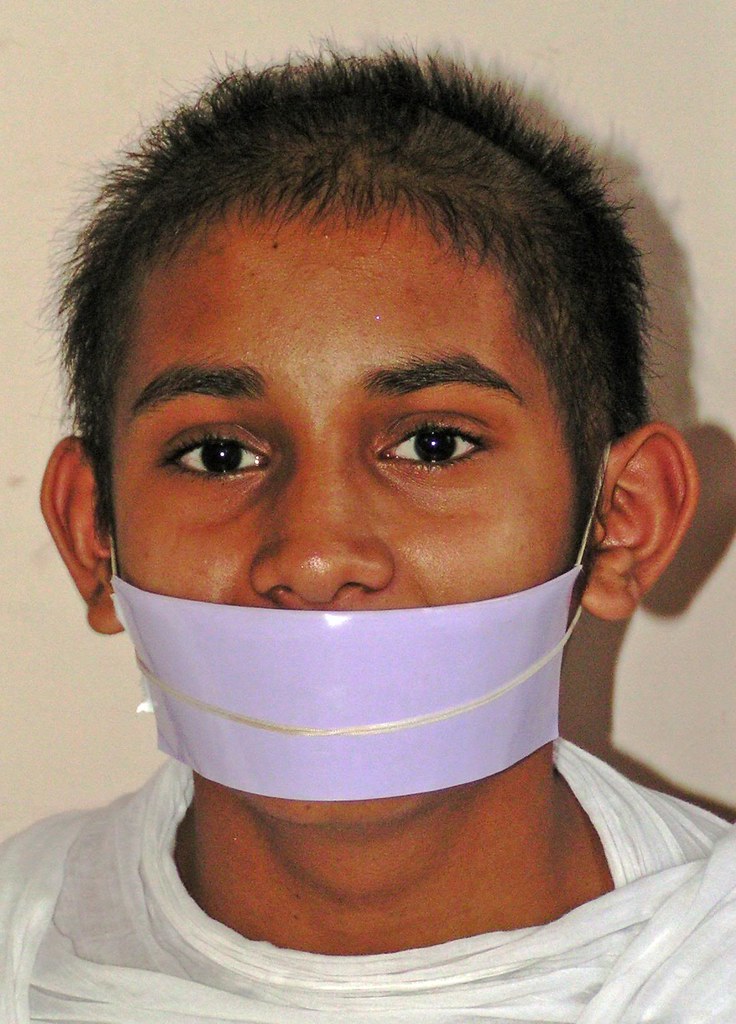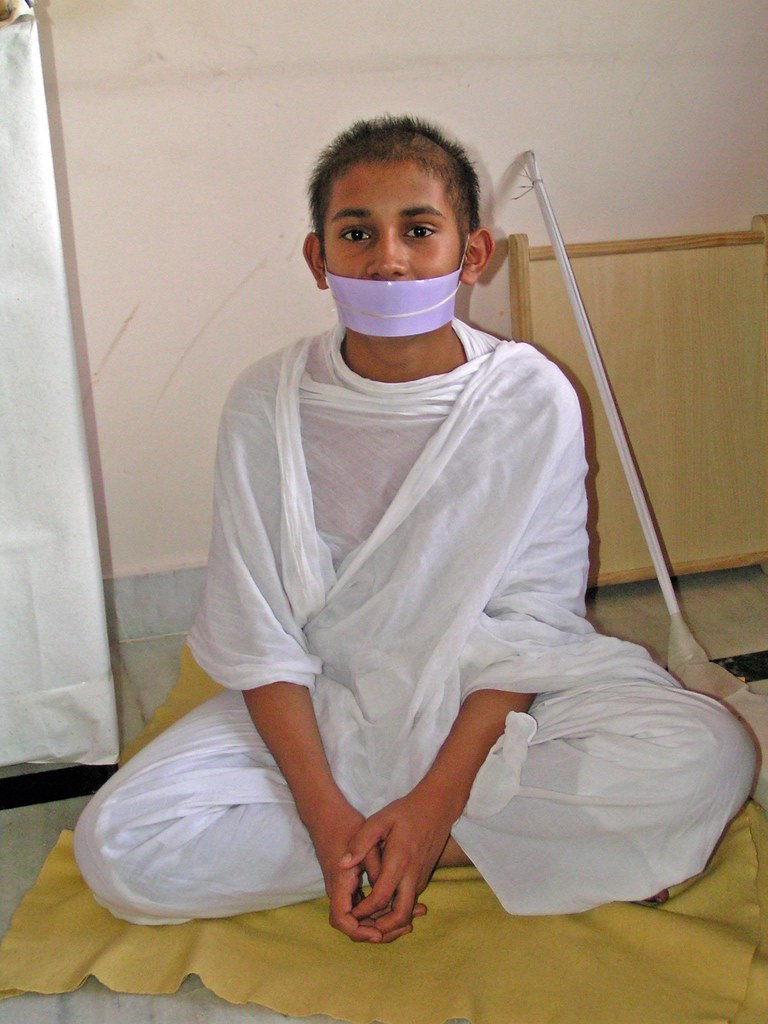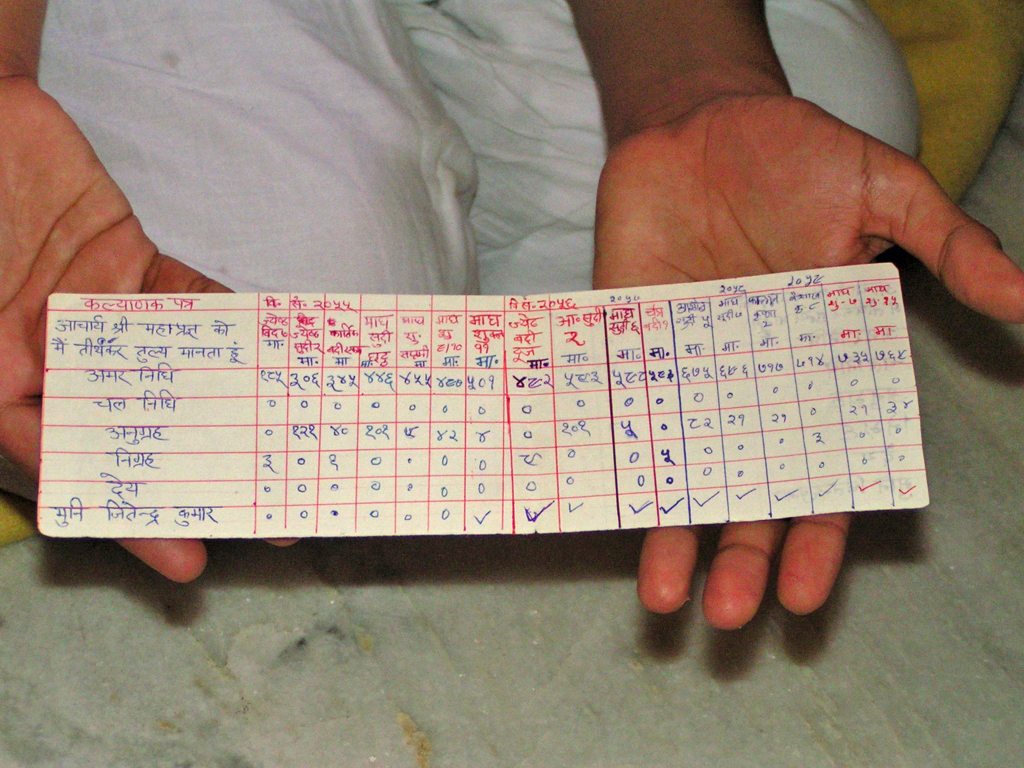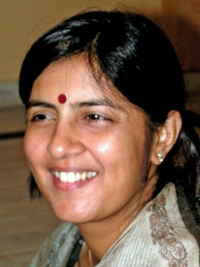Among the large groups of monks of almost all ages surrounding Āchārya Mahāpragya (who himself is 89) are a number of children. They are an inherent part of the monks’ community, or should we call it a large family? What brings a child of around ten years old, or 14, or 18, to become a monk and feel attracted and dedicated to this otherworldly type of life?

We asked one of them, the oldest of the young ones, who is 15. Here follows his story.
His religious name is Nachiketa Muni Gautam Kumar, called by everyone Muni Gautam. His name Nachiketa is after that of a young boy in Vedic times who gained enlightenment at an early age. Muni Gautam took diksha – was initiated – in the community of monks one and a half years ago, when he was 14. Also his younger brother was then initiated. He came from a small village, Birmawal in the middle province (Madhya Pradesh) of India.
I asked Muni Gautam why he had become a monk – a major decision in life. He told us:
It is important to purify one’s soul. In this way we can reach the highest level (mokṣa). He is not yet enlightened and wants to be. For this he is prepared to work very hard.
He does not regret his step at all: “I feel blessed in Āchārya’s presence, and I am happy with the education and teachings I get. All the monks are very good to me.” He feels to be part of a large family. Everyone is your friend. As an outsider, a middle-aged worldly dressed European, I must say that this is just how it feels to me. Whenever I go to this place I feel very much at ease between these many monks. His best friend is his teacher sitting next to him, Jitendra, himself relatively young, who Gautam says takes very good care of him.

I asked him how it is to be a monk. He told life is much regulated. There are strict schedules for everyone: sleeping at 10 PM and getting up at 5 AM. Twice a day he, as all other monks, have to investigate all their possessions (which are minimal – his white thin cotton garments and some other necessities of life, a broom to gently sweep away living creatures to avoid stepping or sitting on them, and books to study). If he would find any living creature he has to carefully remove it to avoid causing it any harm. If they find a creature that is already dead, he gets punishment, because even if one didn’t kill it, it is still the result of negligence. ‘Punishment’ consists of having to memorize and repeat sūtra’s (aphorisms from the scriptures), or fasting, or reading. For good actions one is rewarded, and there is a point system. With 933 points Gautam has the highest score of all (see picture). He earned his point by doing his studies at the right time, and by great tolerance.

His studies consist, apart from the things all children have to learn, of Sanskrit and Prakrit – the old languages of the scriptures, verses and explanations (in Hindi) from the scriptures (he had learned the verses and their explanations by heart). He learns the Sanskrit grammar of Kalu Kaumidi. Coming from a rural area he does not speak or understand English, but has now started learning it. Many elder monks are scholars. Much emphasis is given to intellectual as well as moral training.
Muni Gautam sees himself in future as a good monk nad wants to be a monk always. A good monk, means among many other things: not telling lies, not stealing, respect to elders, etc. Gautam never has lied since he has become a monk, though he did sometimes before that time, as he told us.
One other aspect of Gautam’s character that has earned him points is tolerance for pain. It has been the habit of Jain monks throughout the ages to pluck out each other’s or their own hairs by hand – quite a painful experience it seems to me. They pull out forty or fifty hairs at once. Muni Gautam has tolerated this pain several times in a stoic way and without protest. From our western point of view it would appear a most unacceptable cruelty. Imagine European of American teachers pulling out their pupils’ hairs until complete baldness! But Jains are more spiritually than physically oriented. One of their experiences is that tolerance for physical pain helps them to be unhampered by physical distraction when focused on spiritual matters.
I asked Muni Gautam what is his favorite occupation: it is to serve Āchāryaji. Most of the time you see the old man and other elderly monks surrounded by some of the children, who support him and help him with every little thing. When he lectures they are sitting close to him and apparently listen with great attention.
I asked him how he regards other people of his age, who have their mobile phones, trendy clothes, and go to parties and discos. The answer was short and clear: “I am not affected and not attracted.”
If children of his age group come to him he asks them questions, like: “What are you doing?” If they do all kinds of things in life, but do not study, he will explain them that this is the age to study. Or, whether the food they eat is pure (vegetarian). If not, he will explain the reasons for being a vegetarian.
The daily practice of meditation is the jāpa mantra known as the Namokar Mantra, invoking the names of the spiritual hierarchy of the Jains, from the highest, completely liberated one to those of higher or lower spiritual accomplishments, the monks, the nuns down to spiritually aspiring people. Also he does some practices, like kayotsarga (complete physical and mental relaxation and awareness).
Muni Gautam indeed makes an impression of great calmness, vividness, purity and dedication. I would wish such a class of children would exist in every country, in some form or another. Lay people have great respect for monks – they are the examples of how everyone would wish to live.
 Dr. Rudi Jansma
Dr. Rudi Jansma
 Shivani Bothra
Shivani Bothra